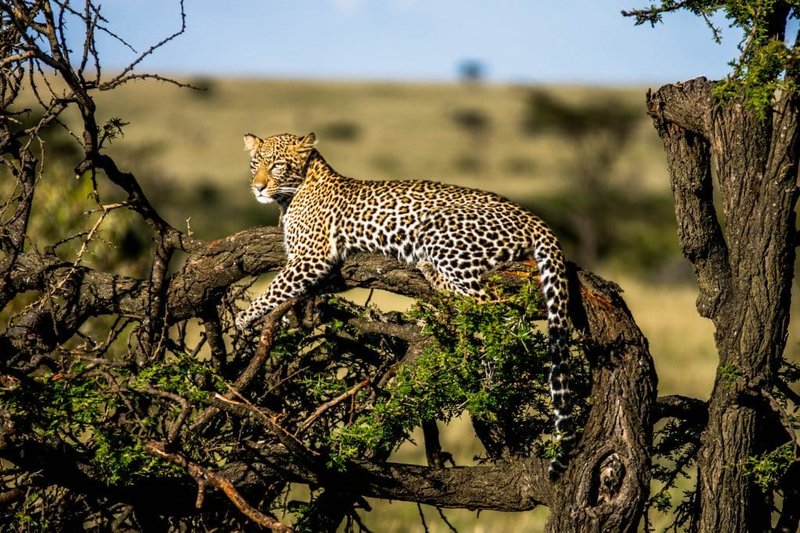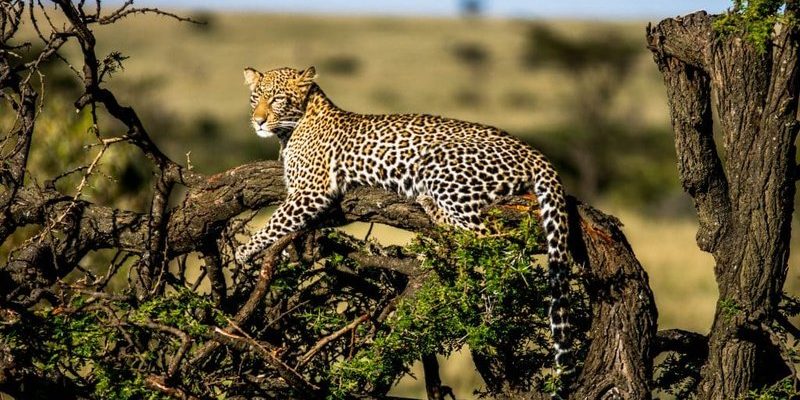
Leopards are not just beautiful creatures prowling through the underbrush—they’re also skilled hunters and key players in their environment. As apex predators, they help regulate the population of their prey, which in turn impacts vegetation and other species in the food chain. By understanding the African leopard’s role in its ecosystem, we can appreciate the delicate balance of nature and the importance of conserving these magnificent animals.
What Is an African Leopard?
The African leopard, known scientifically as *Panthera pardus*, is a highly adaptable big cat found throughout sub-Saharan Africa. With its distinctive spots and powerful physique, this animal is often seen perched on branches or stealthily stalking its prey. Unlike lions that hunt in packs, leopards are solitary hunters, which allows them to live and thrive in a variety of habitats, from dense forests to open grasslands.
Here’s the thing: leopards aren’t just about strength and stealth. They are incredibly smart, using their surroundings to their advantage. For instance, they often drag their kills up into trees to protect them from scavengers like hyenas and lions. This not only secures their next meal but also allows for other smaller animals to benefit from leftovers, showing how interconnected their survival is with that of other species.
Moreover, these cats have a unique system of communication that includes vocal sounds like growls and roars, as well as body language. This communication helps them stake their territory and find mates, further contributing to their role in the ecosystem.
Leopards as Apex Predators
In the wild, leopards occupy the role of apex predators, meaning they are at the top of the food chain. They primarily hunt small to medium-sized ungulates such as deer, gazelles, and even smaller mammals like monkeys. By preying on these animals, leopards help control their populations, which can prevent overgrazing and damage to vegetation.
You might be wondering why this matters. Well, when prey populations are well-regulated, it allows vegetation to thrive. In turn, healthy plant life supports a range of other species, including smaller herbivores and various insects. So, when leopards hunt, they’re not just ensuring their own survival; they’re also promoting a balanced ecosystem.
Additionally, the presence of leopards can influence the behavior of their prey. For example, animals might avoid areas where leopards are known to hunt, allowing vegetation to recover in those regions. This behavior, known as the “landscape of fear,” helps maintain ecological balance.
The Impact on Biodiversity
Biodiversity refers to the variety of life in a given ecosystem, and African leopards play an essential role in maintaining that diversity. By keeping prey populations in check, leopards create a healthier ecosystem where various species can thrive. Each species has its role, and without leopards, you could see a spike in certain herbivores that could lead to overgrazing.
In a more diversified environment, plants grow robustly, creating habitats for countless other animals. For example, healthy shrub cover can provide shelter for birds, rodents, and insects, which in turn supports larger predators. This web of life showcases how leopards contribute to a thriving environment.
Furthermore, areas with high leopard populations often have richer biodiversity. Studies have shown that when apex predators are removed or diminished in number, it leads to a cascade of negative effects throughout the ecosystem. This phenomenon emphasizes the crucial role leopards play in environmental health.
Leopards and Scavengers
When a leopard brings down its prey, it doesn’t just benefit itself; it also creates opportunities for scavengers. After a leopard has eaten its fill, various creatures—like hyenas, vultures, and jackals—often come in to clean up the leftovers. This scavenging process is vital for the ecosystem, as it helps in waste disposal and nutrient cycling.
You might visualize it like a dinner party; once the main guests (the leopards) finish their meal, the leftovers are available for other guests (the scavengers). This sharing of resources ensures that nutrients return to the soil, promoting healthy plant growth.
Moreover, this scavenging behavior can help support populations of scavenger species, which often face challenges finding enough food. So, leopards indirectly support a broader array of wildlife, making their presence all the more significant.
Conservation Challenges
Unfortunately, the African leopard faces numerous threats that jeopardize its existence, including habitat loss, poaching, and conflict with humans. As human populations expand, leopards often find themselves squeezed into smaller areas, leading to increased competition for resources.
Let’s break this down: when leopards lose their habitat due to agriculture or urbanization, they end up coming into contact with livestock. This often leads to negative interactions, as farmers may retaliate against leopards attacking their animals. This conflict can cause leopard populations to decline, disrupting the ecological balance they help maintain.
Conservation efforts are crucial for protecting leopards and their environments. It’s important to raise awareness about the ecological roles these big cats play and encourage sustainable practices that allow both humans and wildlife to coexist peacefully.
The Future of the African Leopard
As we look to the future, it’s clear that the African leopard’s survival is intertwined with ecosystem health. Protecting these elusive cats means safeguarding entire habitats and the species that rely on them. Conservationists are working tirelessly to create protected areas and promote coexistence strategies with local communities.
You might be wondering what you can do to help. Supporting wildlife conservation organizations, spreading awareness, and even visiting national parks can make a difference. Every small action contributes to the greater goal of preserving the incredible biodiversity that leopards help maintain.
In the end, the African leopard is not just a beautiful creature but a vital component of a complex web of life. By understanding their role in the ecosystem, we can appreciate the intricate connections that make nature so extraordinary.
In conclusion, the African leopard plays an essential role in its ecosystem as an apex predator, a regulator of prey populations, and a contributor to biodiversity. Protecting their future is not just about saving a single species; it’s about preserving the delicate balance of nature that supports countless lives. Every effort counts in ensuring that the African leopard continues to roam the wild with grace and purpose.

